Fireplace in the house or at the cottage - the place of attraction of the whole family. It is clear that it wants it to be beautiful, but also does not prevent practicality - soot and soot, dirt or resin with firewood, all this often turns out to be on the walls of the portal. For this reason, the surface should be easily washed. In addition, the finish of the fireplace must be heat-resistant - although the sidewalls of the fireplace are heated far from such temperatures as the furnace, it is not worth neglecting this requirement. Satisfy these requirements are not so many materials. It is a heat-resistant plaster, special types of ceramic tiles and stone - natural or decorative.
Plastering fireplace
Plaster is one of the simple and practical options for designing a brick fireplace. Several years ago, the plastered surfaces were flushed or painted. Today it appeared the opportunity on top of ordinary plaster, apply a layer of decorative with different textures.
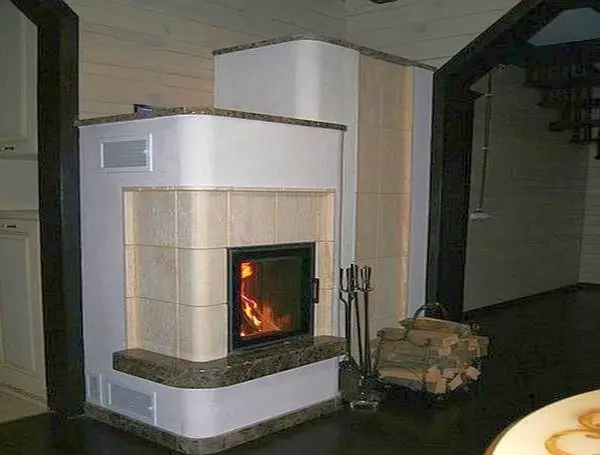
Finishing the fireplace plaster can be fragmentary
Types of plaster for fireplaces
Finishing the fireplace with plaster is popular for the reason that the design can be developed any. The second plus is if everything is done correctly, to achieve a smooth surface, a beautiful and durable finish. For plastering of fireplaces, the same compositions are used as for brick stoves. Although the temperature of heating surfaces differ, plaster mixes make the same. There are two options: make a plaster composition yourself or buy ready. If the experience of working with clay and the determination of its fatness is not, it is better to buy. The shopping plasters for fireplaces and furnaces include additives and additives that make the surface more durable, cracks appear less often.
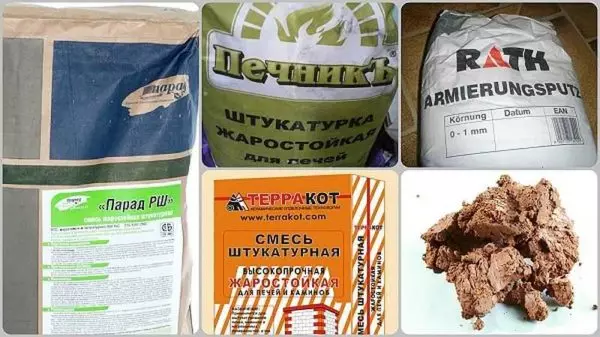
Mixtures for fireplace plaster
As a rule, each manufacturer has two compositions with different properties. The first is basic, for the draft finish. It can be applied a sufficient thick layer - up to 10 mm. After drying, the second layer is stacked - Finish. It contains more thinly grinding substances, applied with a thin layer - usually up to 3 mm, the surface is obtained smooth. Such a surface can already be painted if attached exactly) or apply decorative plaster.
If you want the finish of the fireplace to cost the minimum amount, plaster formulations from clay, sand and lime independently. But, again, repeat, without experience with the clay, ensure that the self-made plaster does not crack, it is difficult. The compositions for the plastering of the fireplace for making them with their own hands are different, here are some proven:
- Clay-lime:
- 1 part of clay and hated lime + 2 pieces of sand;
- On the basis of hazed lime - on 2 parts of lime for one part of the gypsum and sand.
- Cement-clay: one part of clay and cement (M 500) + 2 pieces of sand;
In order for the fireplace of the fireplace for the fireplace, reinforcing fibers add to it. Previously, it was finely chopped straw, later - asbestos fibers, and today it is mainly added glass or fiber fiber. The share of this supplement is small - 0.1-0.2 parts. It is added to dry components (cement and sand), everything is mixed. The dry mixture is added to the clay and / or limestone dough, it is thoroughly mixed again, water is added as needed.
Lime it is better to take already hated, in the form of a limestone test. If you extinguish it at home, unreacted particles always remain, which during the operation of the fireplace then quenched, destroying the plastered surface. Regarding sand - its number is precisely selected depending on the fat content of clay. The solution must be plastic enough. The fat content of the solution is checked with a piece of wood. Lower it into the solution and get it. If a smooth layer of 2-3 mm thick remains on the surface, the solution is normal. If the layer is thick and the mercury - it is necessary to add sand if the stick is almost clean - add clays.
Article on the topic: Electric warm flooring device: technology
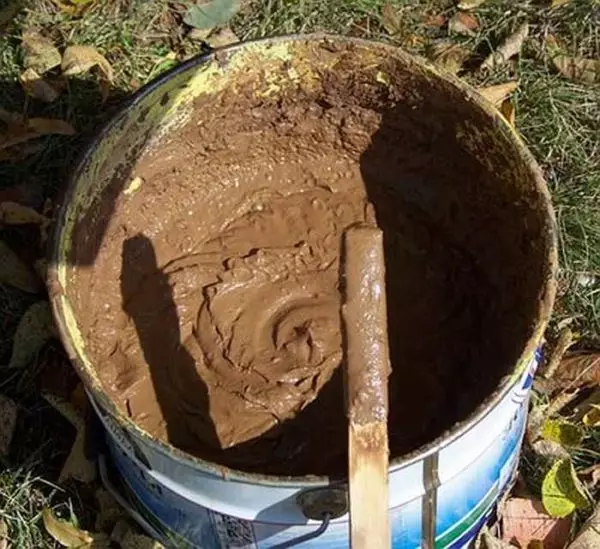
Solution of normal fatness
The clay is pre-discharged (2 days or until all lumps are expelled), then wipe through a metal sieve with a cell 2 cm. The reared clay dough is once again pushed through the grid, but already with a fine cell - 0.5-0.7 mm.
The sand needs a career, it should be clean and dry. Before use, it is also sieved.
For those who do not want to be found with self-made compositions we give several firms producing plaster for fireplaces and furnaces. The following compounds showed themselves:
- Plovetonite supercohol refractory;
- Petrojiks ku;
- heat-resistant terracotta plaster;
- Bossnab;
- Parade RS;
- RTner;
- HefnerPutz furnace plaster.
There are both domestic producers and European. It is impossible to say that the Russian compositions are worse, but it is easier to work with imports.
Features plaster furnaces and fireplaces
The technique of applying a solution is no different: a spatula or special bucket is applied (sprayed) a specific layer, then aligned (in lighthouses). Highlights are in the preparation of the fireplace surface to plaster:
- First, the whole old finish is removed from the walls, if it is - paint, lime, residues of plaster, mortar, etc. There should be only clean brick.
- For a better adhesion of the plastering solution with the surface, the seams are deepened by about 1-1.5 cm. Take the extender, the chisel or screwdriver and scrape the solution in the seams.
- All the cracks that are sealed with a repair make up or heat-resistant sealant (which maintains heating to 800 ° C).
- When everything is prepared, take a brush with long bristles and clean the surface well. It should be clean.
- Next go options:
- If the fireplace surface is relatively smooth (differential less than 5 mm), you can moisten the walls and begin to apply plaster.
- If, due to the curvature of the surface, the layer will have to do more than 5 mm, reinforcement is necessary. On the walls of the fireplace, they feed the metal grid with shallow pieces. It is fixed with nails, which are clogged in the seams (seams can not be broken, or squeezed, but not so deep). To keep the hats to keep the grid, wear metal washers larger than the cell size. On top of this stacks are applied plaster. In this case, you can be sure that the plaster will not disappear.
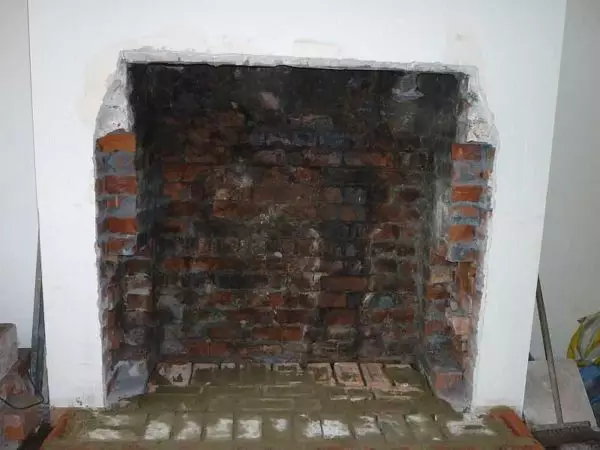
Fireplace after plaster
Before starting plastering the fireplace, carefully read the instructions on the pack. There is usually described under what conditions and how to apply plaster. But the masters advise to melt the fireplace, warm the walls up to 60 ° C, after which they mix the surface and start plastering. Heat the walls so that the brick take its "working" dimensions. In this case, it is less likely that when heated by plaster sparkle. Wetting water is necessary so that the solution is not too dry: the brick is hygroscopic. If it is dry, quickly pulls the water from the plaster mortar and it becomes too dry, does not harden until a normal state. The result is cracked on the surface.
A few more points about drying. With plastering the fireplace, at least two layers are applied. The second can only be applied after the first dryness is completely. To accelerate the drying, you can organize drafts, but it is impossible to turn the fireplace. The same applies to the second - the finish-layer.
The technology of plastering furnaces and fireplaces see the next video.
Facing a fireplace tile and porcelain
The finishing of the fireplace tile or porcelain is conducted on a special heat-resistant glue. Tile for such works is not suitable. It should be good to carry heating, be durable, dense (with small pores), plus it should be easy to care.
Finishing the fireplace by ordinary ceramic tiles is a lottery. If you are lucky, it will stand normally, if not - after a while, the layer of glaze will cover the network of the finest cracks. The view will be "not very", wash it difficult. If possible, it is better to use special materials:
- Terracotta. The tile with a unhappy surface is characterized by a characteristic color, thanks to which he received its name. It has similar to the brick coefficient of thermal expansion, because it does not crack.
Terracotta - Tile for finishing fireplaces and stoves
- Majolica. This is the same terracotta tile only with the icing applied to the front side. Technology is more complicated, the price is higher. Finishing the fireplace Maitolika requires careful sketch development - you will not cut such a tile. Also required high qualification of the master - the slightest deviations are striking. Apparently, for this reason, yes, because of very high prices, you can see fireplaces and stoves with fragments of Maitolika. I must say that these fragments are very decorated and revived the interior.
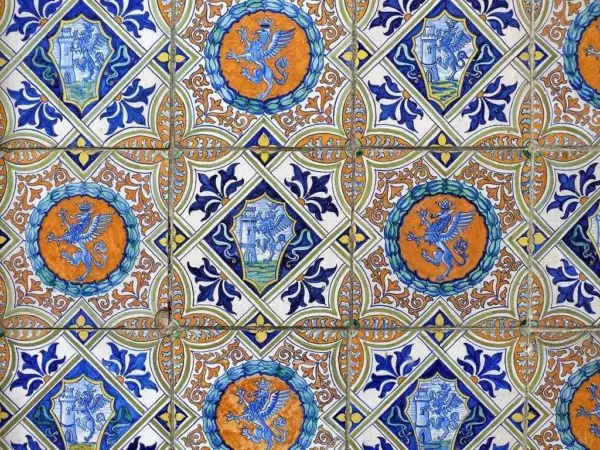
Maitolika - colorfully and beautiful
- Heat resistant clinker tiles. Make it from a mixture of several clay varieties, with the addition of chamot. Its formulas are pressed, then burn. The result is thin - 9-12 mm thick - and a robust tile. Colors - from white-gray to brown.
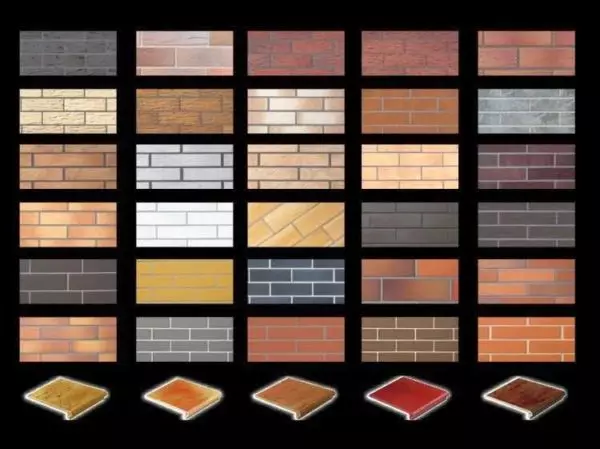
Heat-resistant clinker tile
- Porcelain stoneware. The production technology is similar - first the composition is pressed, then burns. Components are distinguished: In addition to several clay varieties, quartz sand is added, a small crumb of granite or marble, dyes, oxides and salts of metals. The structure of the porcelain stoneware is low, it is well tolerate both high and low temperatures. The technology allows to obtain material, mimicing marble, other natural stones, terracotta, clinker and majorics. The lack of porcelain is difficult to cut it and it has a lot of weight. For facing of fireplaces, plates of small thicknesses are used, because the weight is not terrible, and it can be added to the firm (only you need to know the exact dimensions of the desired fragments).
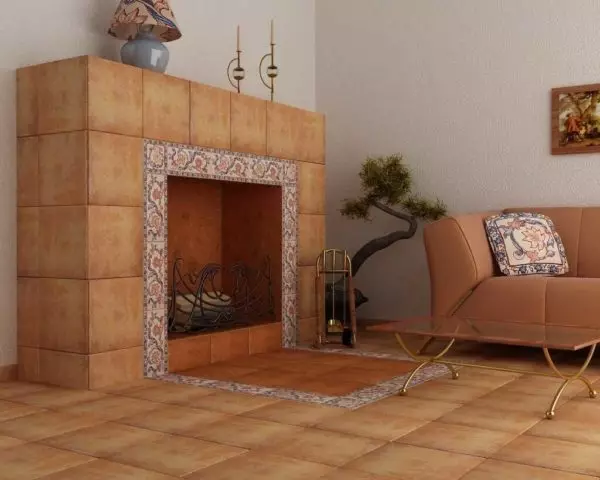
Finishing a fireplace with a ceramranger - you can develop a design in any style
- Tiemas. The production technology is not much different - clay is molded, burned in the furnace. The main difference is the form and method of installation. Tiles are installed during the masonry of the furnace or fireplace - fragments with wires are fixed in the seams. So the finishing of the finished fireplace is impossible.
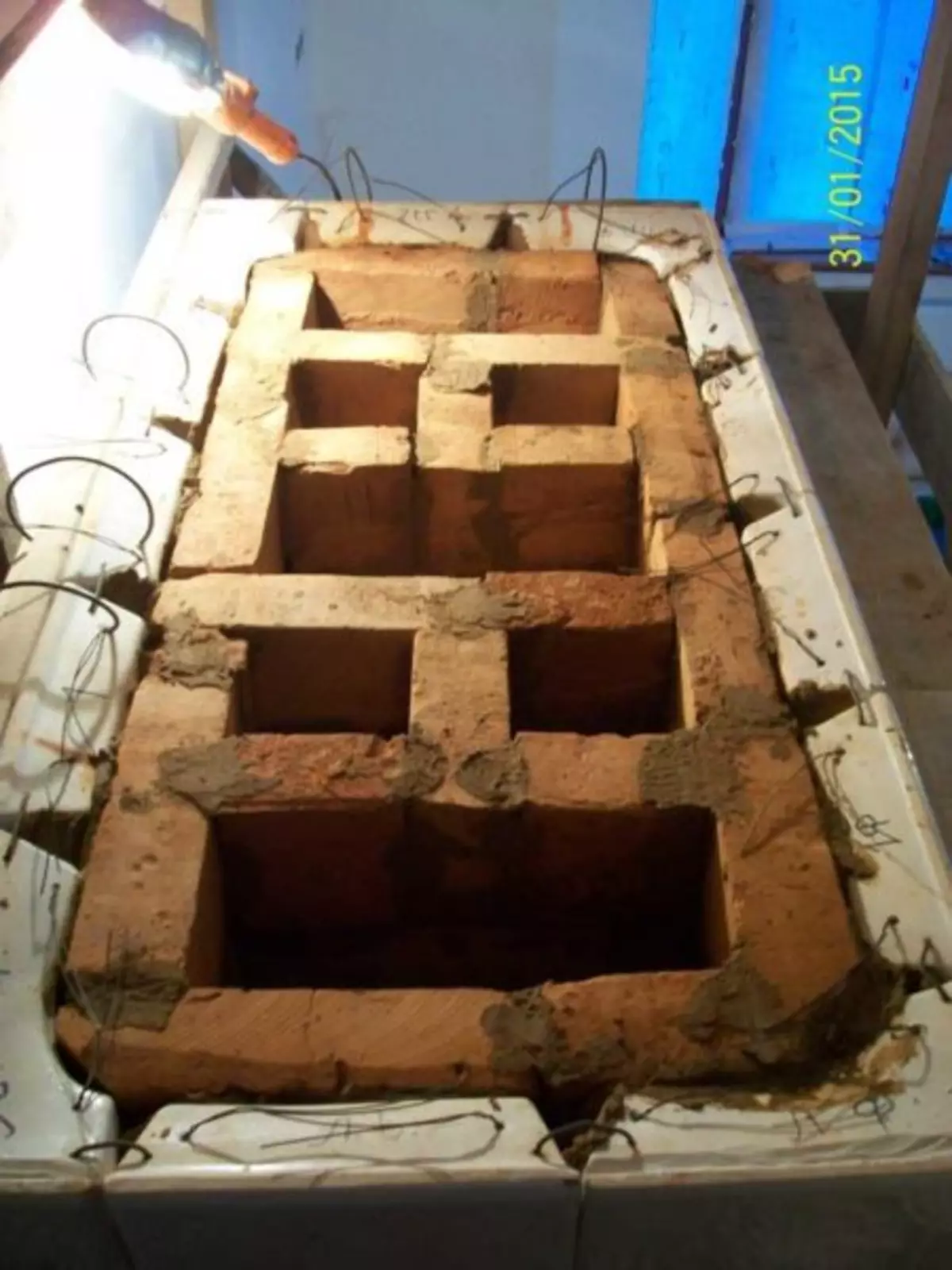
The process of installing tiles
Special tiles for facing fireplaces and furnaces are made of a small or medium format, and the same porcelain is in large plates. Seamless styling, of course, is attractive, but it is impossible to ensure that such a finish will not fall. The thermal expansion coefficient is quite different, because of this, incidents are possible.
Technology of mounting tiles on wall fireplace and exhaust pipe
All listed types of tiles, besides tiles, are mounted on fireplaces for a single technology. The finishing of the fireplace tiles begins with the preparatory stage, and it one in one coincides with the above described: Clear the surface, sew the seams, heat up to 60 ° C, mix and can begin finishing the fireplace tile.
With big irregularities it is necessary to launch a fireplace. Solutions - any, containing clay and cement, but not containing lime. Preparation - standard, as well as the process of plaster. The difference is that the second is not necessary to apply the leveling layer.
Putting the tile on the wall of the fireplace after complete drying. Stacking technology - standard, difference in the thickness of the seams. For the fireplace, it is better to make them more (compensate for the different magnitude of the thermal expansion), because instead of the cross, the pieces of drywall are 9.5 mm thick.
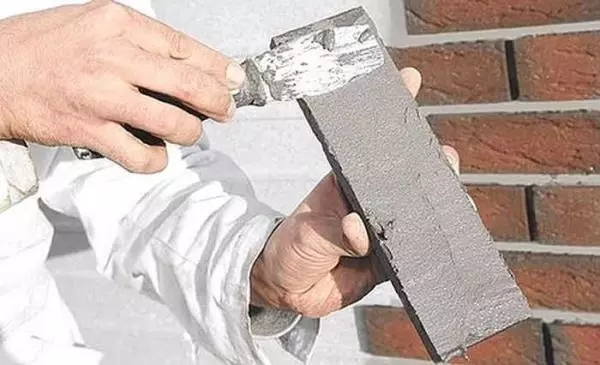
Glue are applied to the tile
The glue is applied to the wall or on the tile, smoothed by a toothed spatula. The tile is pressed against the surface, shaking it from side to the side, set to the desired position. Set the distance between fragments using plasterboard struts. Remove from 3-4 hours after installation.
Tile on the fireplace leaves to dry. The exact time depends on the glue and weather used, is usually indicated on the package with glue. The last stage is filling the seams. Paste for seams is also used special, buying better with glue - one company so that there are no compatibility issues. The process is also standard - the composition is divorced by water according to the instructions, the seams are filled with a rubber spatula or from a construction syringe. The freshly abandoned solution is aligned, the form of a beautiful seam. Surplus wipe the soft rag.
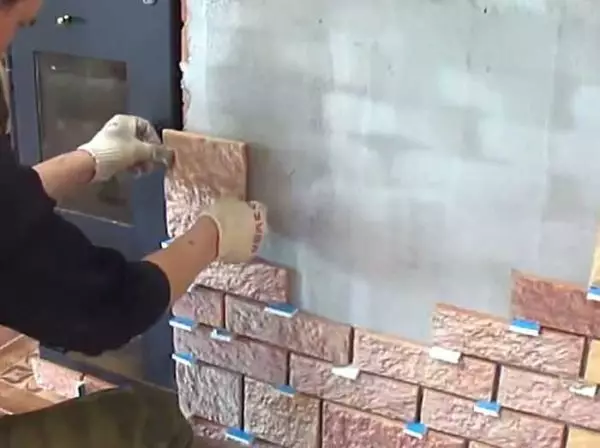
Seams between tiles are conveniently withstanding with slices of drywall
There are advice from the masters:
- So that the tile is guaranteed not to fall, attach a metal grid with fine meaches on the wall. It is even better to fill in the seams of nails and cross them soft steel wire, creating a wire frame. This option is better in that in complex places the grid can be made thick. This stage is necessary if you are going to melt a heavy porcelain stoneware or large format tile.
- In order not to lay a thick layer of glue, apply it on the wall and on the tile, and there and there to remove the surplus with a toothed spatula.
- Before laying the tile, spread it on the floor so that you can really appreciate how attractive the finish will be.
- After laying each tile, excessive solutions are removed from the seams. They will then be filled with special paste. The surface of the tile is immediately wiped off well - if the glue will freeze, it is practically unrealistic to cleaned it.
The main thing in this work is to ensure that air cavities are not formed under the finish. Air has a large expansion coefficient and, when heated, it will ever break the tile from the wall.
Fireworks Fireworks Fireplace Tiles
How much do not read about how to do, look much more useful - more details can be grasp.How to Lining Fireplace Stone
Finishing the fireplace stone technologically not much different from laying tiles. The difference in working with the material itself, and technically there is almost no features. The only thing - when using a natural tummy, be sure to beat the fireplace mesh. Without it fall off.
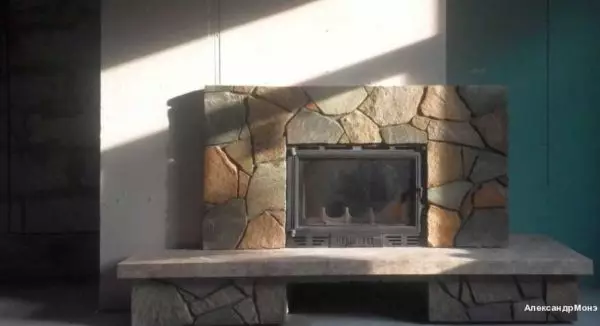
Finishing the fireplace stone - one of the options
Features of working with artificial gypsum stone
This kind of decorative stone is inexpensive and lightweight, you can finish fireplaces, especially without overloading overlap. There are only some nuances, without which you will not achieve a good result.The production technology of gypsum stone is such that on each element there are some irregularities, influx, protrusions. They are stepping with the help of a knife, the benefit of the plaster cuts without problems. Each element of the facing is calculated so that a frame with an angle of 45 ° (or so) was formed in the perimeter.
Moreover, often angular elements of a plaster decorative stone a few millimeters above ordinary from the same collection. So that the facing looked monolithic, it is necessary to clean this difference - to complete. When all the elements of the facing are fitted, they can be glued in place. Use heat-resistant glue for cladding fireplaces, even at the correct design it is almost not heated.
Work with natural stone
Most often facing fireplaces with natural stone, dried on the plates. It is called tiltry or stone tile. The form of all fragments is different, you have to customize so that everything is beautiful. In this case, it is precisely better to first lay out the entire picture on some plane, pick up and process elements. Only after the mosaic begins, it will be possible to glue. All montage technology on the wall of the fireplace is described above and is practically no different. The whole process can be viewed in the video.
Interesting finishes of fireplaces (photo)
All methods described above can be combined by creating a finish in different styles. Sometimes it turns out very beautiful. Some already implemented ideas are postponed below.
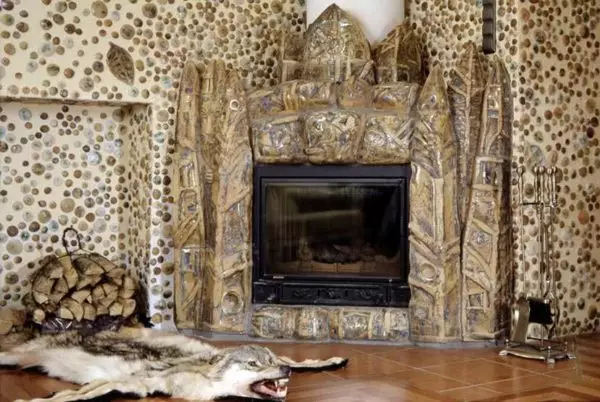
Very interesting fireplace design
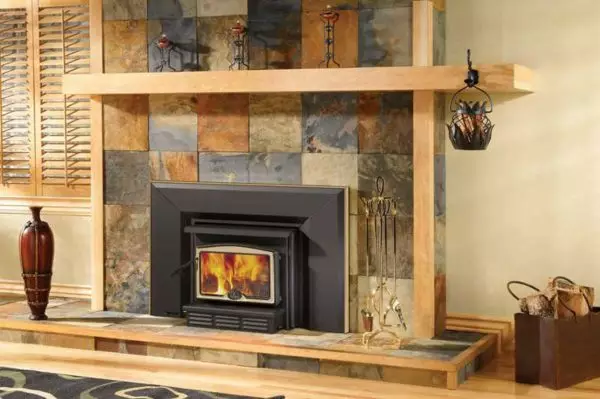
This option will fit into modern styles.
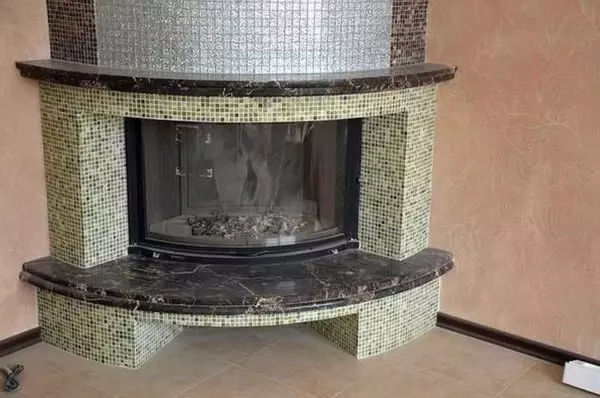
Finishing the fireplace mosaic is especially good on rounded forms, where other materials are very problematic
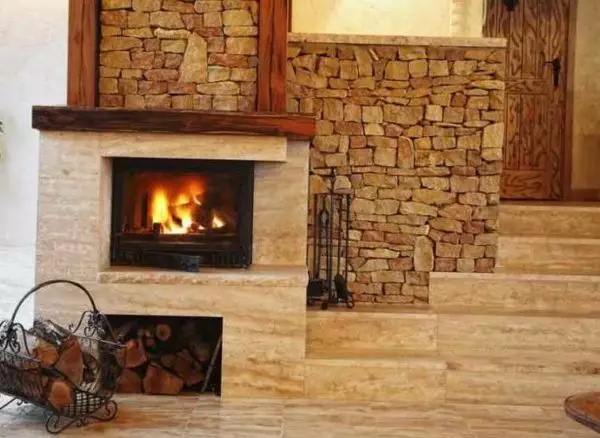
Combinations of different types of artificial stone with wood fragments
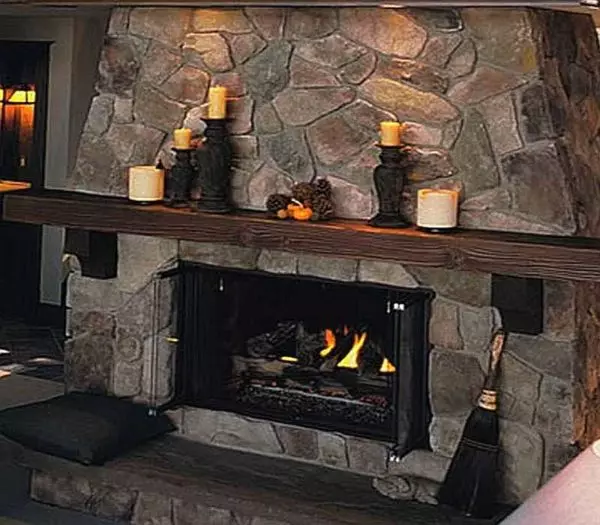
Firecrain of the Fireplace and Exhaust Pipe Portal
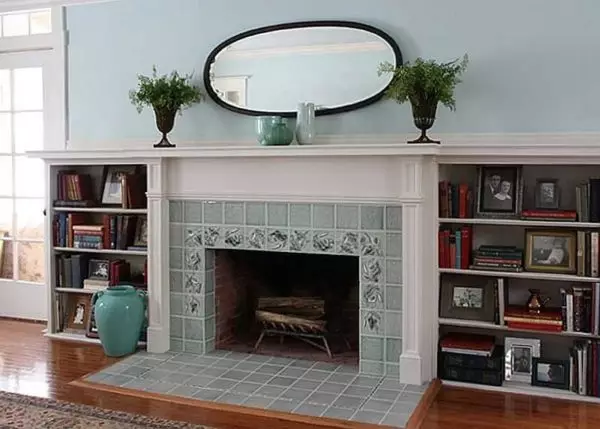
Combination of plaster and tile
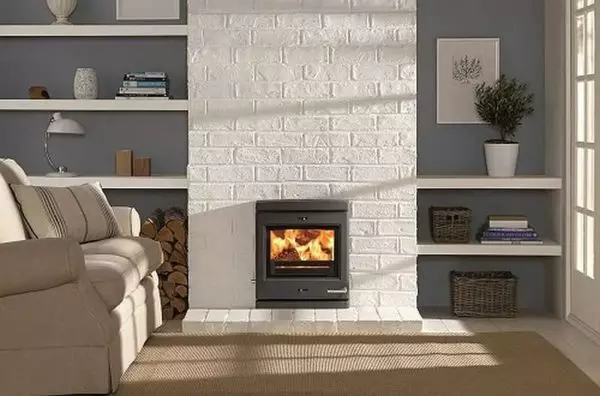
There are two options to achieve such an effect - paint an existing brick fireplace or to bore clinker tiles
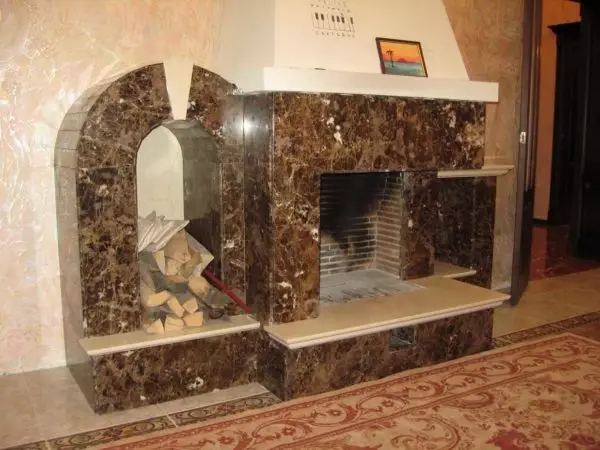
It is polished ceramgorean
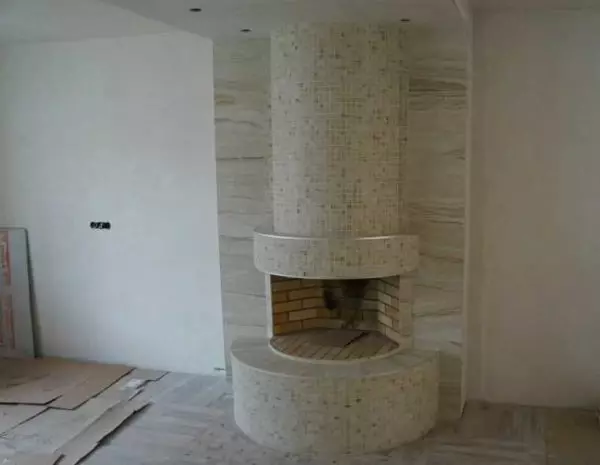
It is a stoneware stoneware, small format. As you can see, it fits well into rounded forms. Horizontal surfaces and columns - also porcelain stoneware, but already in the form of plates
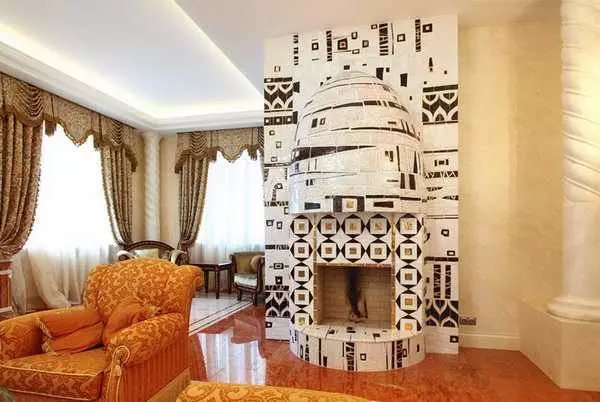
Designer Cap, as well as finishes
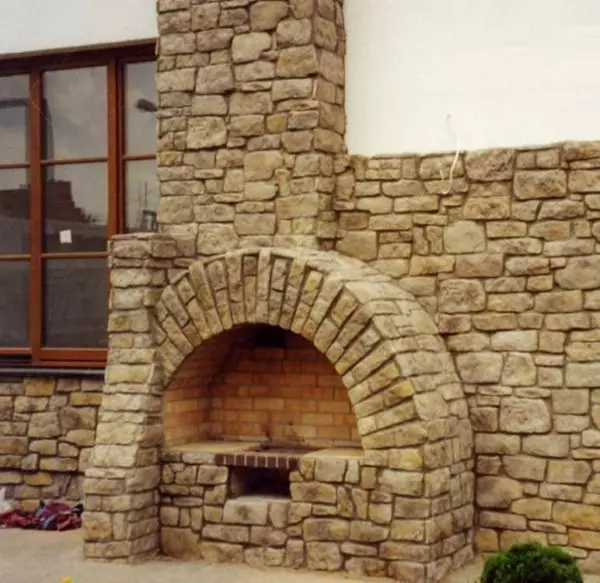
Facing a fireplace stone can be made on the street
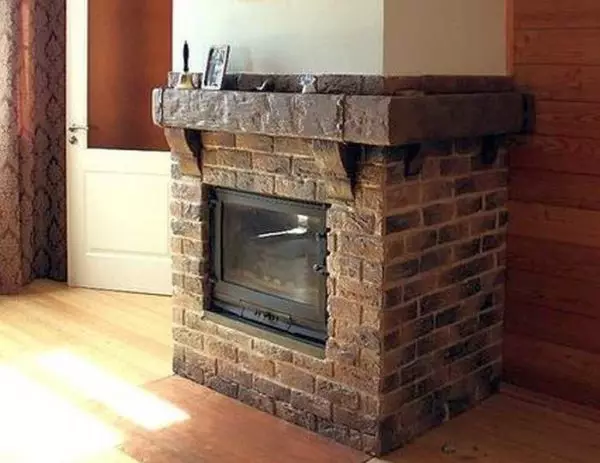
Terracotta in combination with wooden shelf repeating tile relief
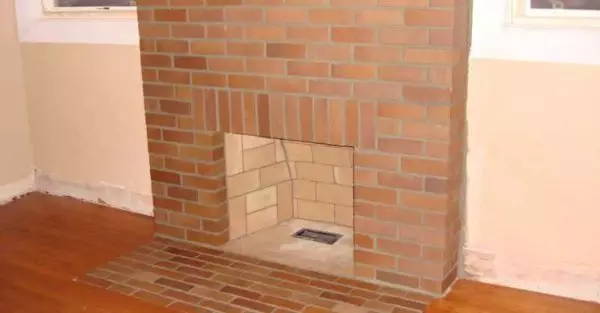
Smooth clinker tile - strictly and functionally
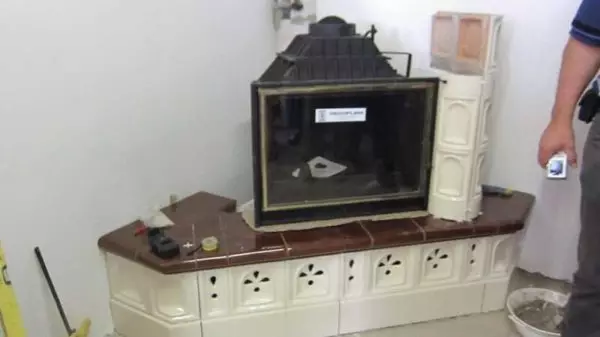
This is a furnace Czech tile. Mounted on special racks
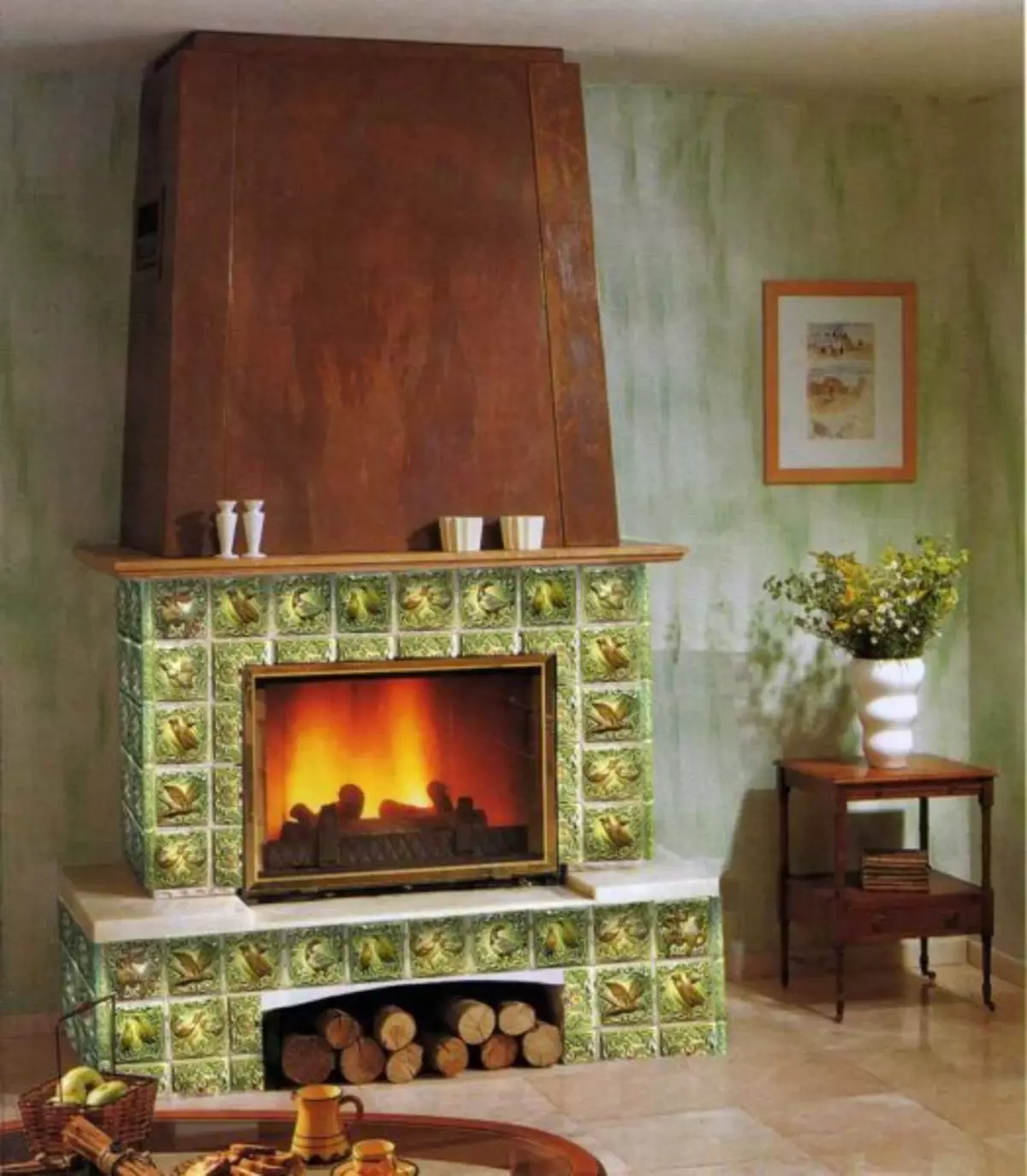
Maitolian looks very decorative
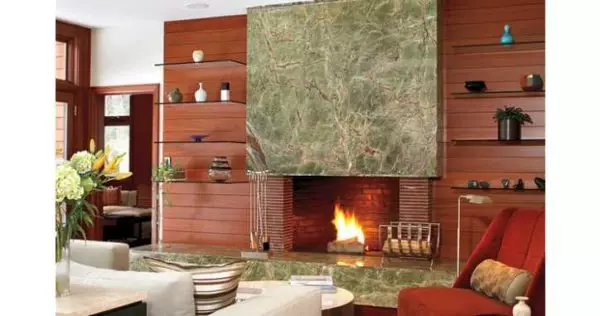
Non-standard version of design
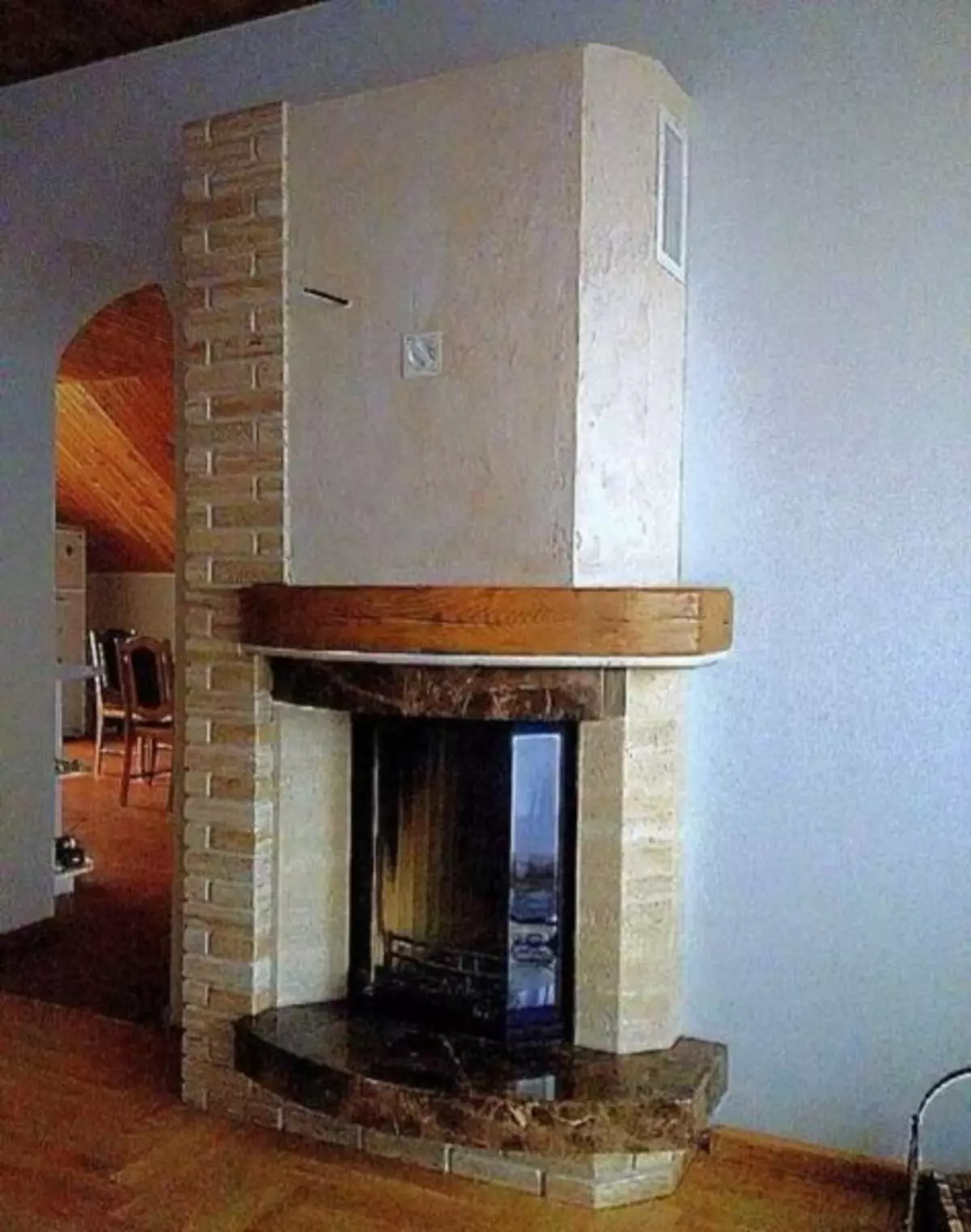
Combination of plaster and tile
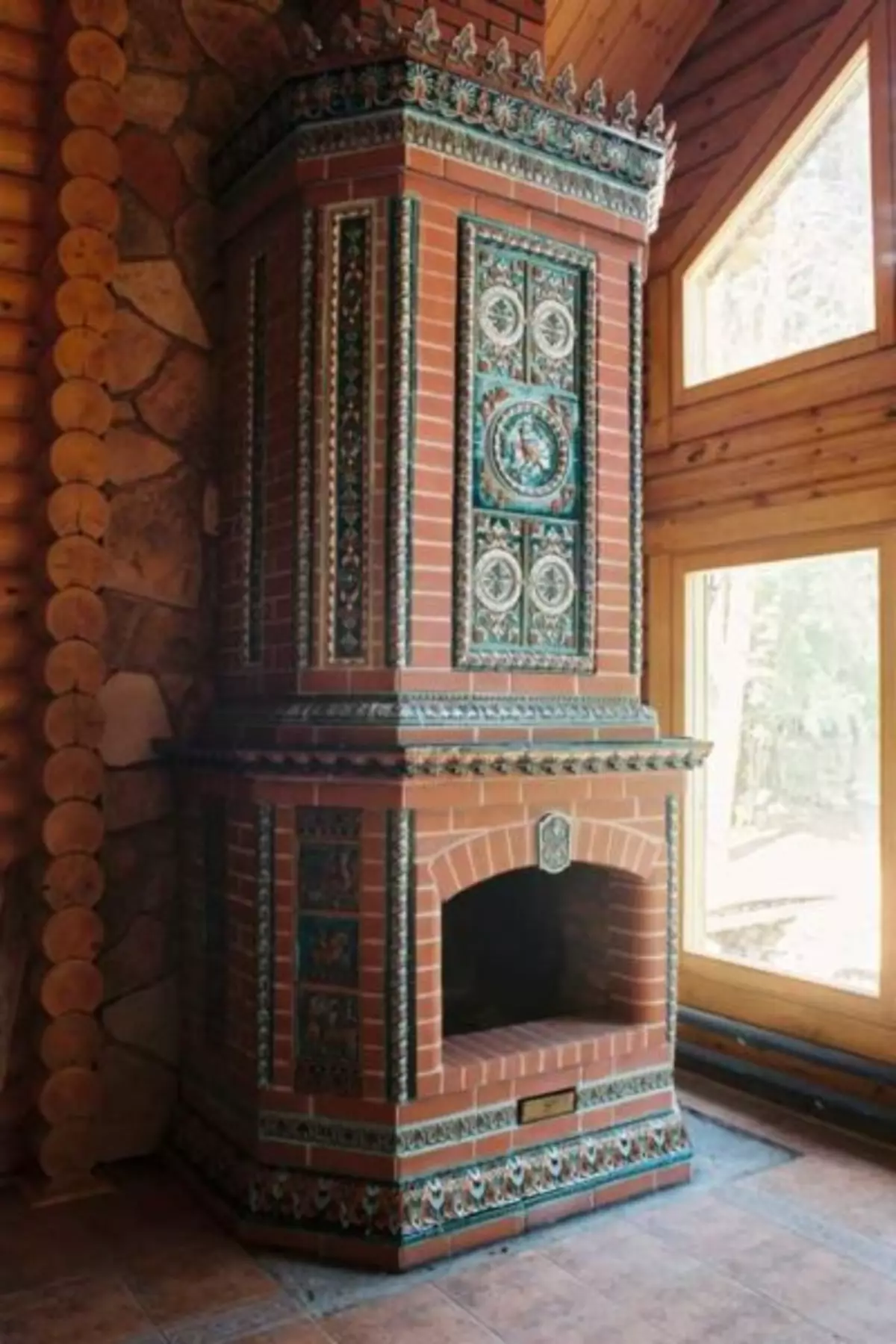
Inserts of tiles - Beauty
Article on the topic: Tulle with flax and organza embroidery
